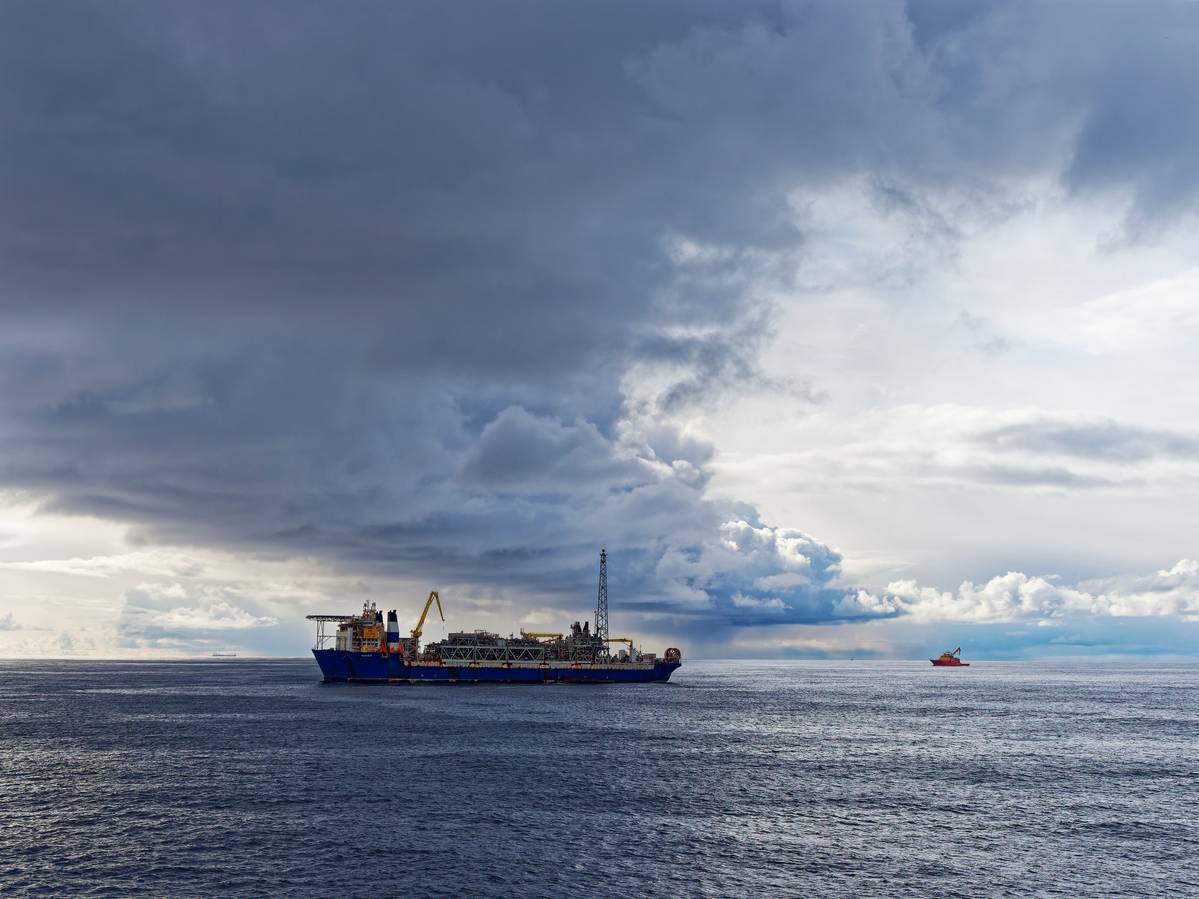Feature
Floating Production Systems
Floating Production: Opportunities … & Challenges … Abound
Nothing inspires confidence in the energy markets like a high price per barrel, and a rebound to the $80-$100 range following six years in the doldrums is welcome news for the floating production sector, which are deep water, long-term, and expensive projects. 2022 was a banner year for the Floating Production sector, and ’23 is shaping up even better, with IMA/WER projecting orders for 9 to 11 FPSOs, a few FLNGs and a handful of FSRUs, too. But while prospects are bright, a number of hurdles – from a dearth of qualified contractors to the energy transition to heightened environmental regulation – could put the sector back on ice.
By Greg Trauthwein

Oil prices in excess of $80/barrel, and the expectation that they will hold firm or rise in the near future, has helped to drive a strong recovery in the deep water sector and brightened prospects for capital expenditure for floating production systems, an energy segment that was on life support only a few years ago.
While oil majors are still holding back on major increases in capital spending, “this is changing,” said Jim McCaul, IMA/WER, who has analyzed the floating production business since 1995 and recently released Annual Review and Five-Year Forecast of Orders for Floating Production System.
“Oil prices have risen to levels that support investment in new facilities and capex budgets are slowly expanding. The profit opportunities are too great to pass up.”
Most recently, Reuters reported that Exxon Mobil was preparing to approve its fifth oil production project in Guyana and is considering taking additional exploration acreage, according to a Reuters report on OEDigital.com.
This comes as global inflation takes a heavy toll, with the latest development expected to cost about 27% more than the last, which is due both to inflation and the increased size of the project.
The company’s proposed fifth development, at an oilfield called Uaru, would pump about 250,000 barrels of oil per day at peak, for a development that is estimated to cost about $12.68 billion, according to an estimate prepared for Guyana's EPA. Exxon has submitted a development plan for the oilfield, and an initial construction contract was awarded last fall to Japan's Modec. This will mark Modec’s debut in Guyana.
Exxon and its partners Hess and CNOOC Ltd. inaugurated Guyana's production in 2019 and today deliver all the oil output in the country, from its 10,347 sq. m. Stabroek block, via two FPSOs, the Liza Destiny and Liza Unity, both supplied by SBM Offshore.
Overall, orders for production floaters have returned to historic pace and a large backlog of deep water projects has developed. More than 200 projects in the planning stage are likely to require a floating production system for field development over the coming decade, according to the IMA/WER report, and the backlog includes about 60 projects requiring an FPSO within the next five years.
Riding the Rollercoaster
Like the offshore oil and gas business itself, the market for floating production systems – projects that can easily exceed $10 billion, with the FPSO alone costing $2.5-$3 billion – has endured its fair share of high and lows over the past generation.
“I've watched this business grow from something like 60 FPSOs up to close to 200 today,” said McCaul. “A lot of the [original] 60 are already gone, I've seen them come and go from the planning stage to the development stage to the installation stage to the decommissioning and scrapping stage. It’s like old friends disappearing!”
McCaul said that the market had been in literal freefall since 2016 “when the Saudis decided to put all the American tight oil people out of business by driving the price of oil down and starving them from revenue. It didn't work, but the investment in the sector really began to fall off. Just as it was beginning to hum again, along came COVID and that knocked the business for a loop again.”
Along the way, orders for floating production units have swung wildly, from up to 20 one year, down to zero the next.
“In 2021 we began to recover; '22 was a very good year [with orders for 11 FPSOs and FPUs combined]; '23 [and the foreseeable future] looks wonderful.”
While the value of a single FPSO contract [$2.5-$3B] is astronomical in traditional commercial shipbuilding contract terms, McCaul noted that further growth in ’22 was muted by a capacity problem – both in terms of human capital to effectively bid and manage a multi-billion, multi-year projects, plus a physical limitation in the number of shipyards that have drydocks big enough to accommodate the units.
“There are only so many contractors that can take these orders, as first of all, the unit itself, the FPSO is complicated, and the new ones are very large,” said McCaul, noting that when he started covering the market in the mid-1990s, 60,000 bpd output was typical, whereas the units coming online today are in the 250,000 bpd range.
This effectively raises the scale exponentially on revenue, but also on technical complexity.
“They [the oil majors] have difficulty getting people and companies to bid the contract. There's been a number of tenders that have been canceled because they haven't had enough bids. I think in 2022, the orders would've increased faster if capacity had been available.”
… and then there is Gas …
The wildcard since Russia invaded Ukraine in early 2022 is gas, as Russia sought from the beginning to use energy security as a weapon across Europe, by curtailing and eventually shutting off the pipeline to the continent. Common logic suggested that an energy-starved Europe would cave on sanctions, particularly as the winter months came and energy prices soared.
But a funny thing happened: a warmer than usual winter (so far) conspired to help moderate gas prices, and Europe aggressively moved to bring LNG import facilities online to move its supplies from pipeline to ship delivery.
“The floating storage regasification unit (FSRU) business is booming, it's taking off like a bullet due to the Russian cut-off of pipeline gas to Europe,” said McCaul. “[The Russian gas cut-off] threw Europe into crisis mode, and that crisis mode has European governance encouraging companies, if not to do it directly themselves, to have terminals where you can bring LNG into Europe. The whole slew of orders, since March 2022. They got them so quickly that it was unbelievable.”
Citing a “tremendous increase in the need for LNG globally,” McCaul expects many new FSRU orders globally in ‘23 and beyond. McCaul expects FSRU orders globally over the next few years to be very strong. All of the FSRUs that were being used temporarily for LNG transport were vacuumed up in Q2 after the Russian gas pipeline cutoff. “Supplying FSRUs is going to be a good business over the next five years. We see this as a tremendous market. But yard space for a newbuild FSRU will be a constraint. Yards are full of LNG carrier work and the queue for a new FSRU will be pretty long -- 2026+ to get delivery. But could be a great opportunity for LNG owners with older carriers that can be repurposed in a repair yard for terminal use.”
O&G & Energy Transition: It’s Complicated
As if the traditional market and geopolitical forces aren’t detrimental enough to accurately predicting the speed, pace, and direction of oil and gas prices, enter a still relatively new force: energy transition.
The world, from governments to corporations to consumers, continues to push the envelope on the development and deployment of renewable energy, with the Wall Street Journal reporting recently that 10% of all motor vehicles sold in 2022 were electric.
That said, the world remains a solid generation or two away from a significant divorce from traditional fossil fuels, and as Russia’s war in Ukraine has proven, energy security tops most countries’ agendas.
“The transition, the talk of transition, the prospect of transition from fossil fuels does not exactly encourage companies to make the large investment in something that's going to be operating for 20-25 years,” said McCaul.
“These projects, like the one that Exxon Mobil is doing Guyana, that's its fifth $12-13 billion project. It takes a bit of hope to invest in something that's going to cost $12 billion when everybody talks about getting rid of oil.”
Ultimately though, it comes down to the balance sheet, and big oil lost a literal fortune and amassed considerable debt in the six years before 2021. Highly leveraged and unwilling – or unable– to reward shareholders with stock buybacks and dividends, fiscal discipline came into vogue, effectively muting investment in new tech and projects, said McCaul.
In step with the energy transition, legislators globally are ratcheting up pressure via environmental legislation which, at best, will increase the cost of the project; at worst, will delay, suspend or shut it down altogether.
This is happening right now in Australia, where the Barossa project is delayed. Late last year, the Australian court ruled against Santos, telling the company it had not consulted “all the indigenous people on the Tiwi Islands … for its environmental plan,” Reuters reported.
According to McCaul, delays like Barossa are unusual, for an offshore project to progress to this stage, then “out of the woodwork someone says it didn't pass all of the environmental tests. Then all of a sudden everything's back to zero,” in terms of environmental approvals.
Regardless, Santos reported in December 2022 that it was applying for fresh approvals, and first gas remains on track for 1H ’25.
All-in-all, McCaul is cautiously optimistic that, despite challenges, 2023 will end up being a solid year for floating production orders.
“We think maybe 15 could be ordered, but we don't think 15 will be ordered because [of the limiting factors on the contractor side],” McCaul summarized.
“Realistically, we're looking at about nine to 11 FPSOs and a couple of FPUs ordered in 2023,” in addition to a few more FLNGs and a handful of new FSRUs if yard space is available.”

